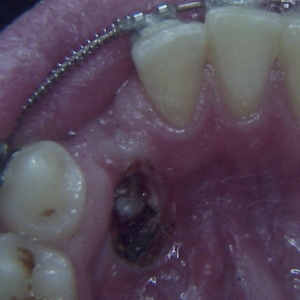Use of laser for uncovering a mandibular retained tooth: case report

All claims expressed in this article are solely those of the authors and do not necessarily represent those of their affiliated organizations, or those of the publisher, the editors and the reviewers. Any product that may be evaluated in this article or claim that may be made by its manufacturer is not guaranteed or endorsed by the publisher.
Accepted: 4 December 2023
Authors
This clinical study aimed to describe a case of lower impacted canine to demonstrate the advantages of diode laser for crown exposure during orthodontic treatment. The patient received a surgical intervention by an infra-red diode laser to uncover a retained lower canine. The intervention did not need anesthetic injection and suture apposition, the patient did not refer pain, and the healing process was completed after a week. The diode laser was safe, fast, and easy to use, and the avoidance of bleeding was reached due to its excellent absorption by hemoglobin: this is particularly important considering that, for obtaining a strong adhesion, a bracket must be bonded in a dry enamel surface. The use of an infrared diode laser is a proper approach in the surgery of retained teeth during orthodontic treatment.
How to Cite

This work is licensed under a Creative Commons Attribution-NonCommercial 4.0 International License.






